Maintaining an oxidized water layer above the pond bottom soil helps prevent the flux of toxic reduced components into the water
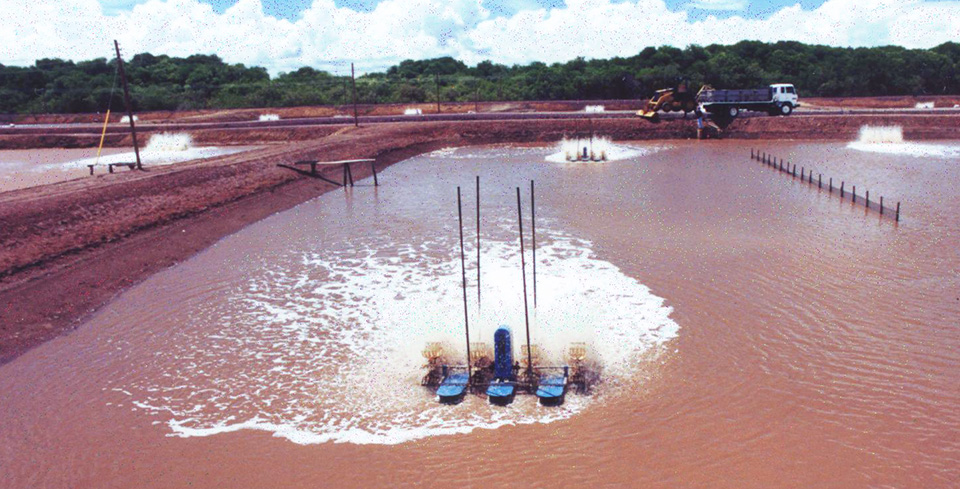
To increase oxygen supply in pond water, intensive shrimp ponds are typically equipped with aerators placed radially around the pond edge and parallel to the pond levees. These aerators, however, provide benefits in addition to oxygen replenishment.
Pond water mixing
An essential additional benefit of aerators is their mixing of pond water. In a way similar to most biotechnological reactors, microbial processes are more effective in mixed pond water. Avnimelech and co-workers (1992) demonstrated that organic degradation and nitrogen transformation are more effective in mixed fish production ponds than in stagnant water.
Mixing also prevents water stratification, i.e., the development of an oxygen-rich layer at the pond surface and oxygen-poor layers near the bottom. Water mixing also offers some degree of control over sludge accumulation on the pond bottom.
Avnimelech, Redox reactions in pond bottom, Table 1
| Electron Acceptor (Oxidizing System) | Process | Approximate Redox Potential (mv) |
|---|---|---|
| Oxygen – O2 | Aerobic Respiration (C + O2 ® CO2) | 500-600 |
| Nitrate – NO3 | Denitrification | 300-400 |
| Organic Components | Fermentation | < 400 |
| Fe+3, Mn+4 | Reduction | 200 |
| SO4, S | Sulfur Reduction | – 100 |
| CO2 | Methane Fermentation | – 200 |
Metabolites in sludge
Bottom sludge is an organic-enriched, anaerobic, soft, and normally black layer that develops on the bottom of ponds. The accumulation of organic residues at pond bottoms creates high rates of consumption of the often limited amount of oxygen available. A series of metabolites are formed in the sludge under anaerobic conditions.
The degree to which bottom sludge becomes anaerobic can be measured as its oxidation/reduction potential or “redox.” Progressively lower redox values are associated with a specific series of chemical processes (Table 1).
At redox levels of 500 to 600 mv, the pond bottom is highly oxidized. As redox declines to 300 to 400 mv, denitrification processes begin to reduce nitrates to nitrite and atmospheric nitrogen. As redox declines further, fermented organic acids are produced. In fish pond sediments, volatile organic acids can occur at levels up to 5,000 ppm. Some organic acids are toxic to fish and Daphnia at concentrations above 100 to 200 ppm.
At redox levels below 200 mv, the oxidation state of iron begins to change from ferric to ferrous, which results in sludge turning blacker. Sulfur reduction occurs at a redox of -100 mv. This results in the production of sulfides, which can be toxic at levels far below 1 ppm. Most reduced organic sulfur compounds are also toxic to fish and Daphnia at levels above 1 ppm.
Avnimelech, Shrimp feed consumption, Table 2
| Tank | Before Sludge Removal | After Sludge Removal | Increased Feeding (%) |
|---|---|---|---|
| 1 | 297 | 367 | 124 |
| 2 | 328 | 480 | 146 |
| 3 | 335 | 420 | 125 |
| 4 | 292 | 410 | 140 |
| 5 | 302 | 380 | 126 |
| 6 | 273 | 373 | 137 |
| 7 | 282 | 430 | 152 |
| Average | 301 | 409 | 136 |
| Standard deviation | 23 | 40 | 11 |
Sludge and anaerobic conditions
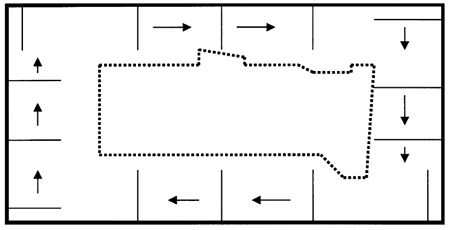
Sludge accumulation and the development of anaerobic sediment conditions can limit fish growth. The effect of sludge on shrimp growth is assumed even more negative, because shrimp live and feed at the pond bottom.
In their limited experiments, Hopkins and co-workers at the Waddell Mariculture Center in South Carolina, USA found that very few shrimp could survive in small, zero-water-exchange ponds that received no mixing or removal of sludge.
In another experiment (Avnimelech, not published), shrimp were stocked at high density and grown in concrete ponds. Feed consumption was monitored for a week before and after scraping and cleaning of the sludge accumulated on the pond bottoms (Table 2). Shrimp activity was limited when sludge was present, but improved greatly following sludge removal. The environmental stress induced by the sludge can also limit growth and induce disease outbreaks.
Managing sludge
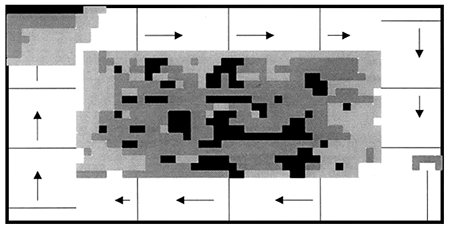
Ideally, bottom soil should be aerated, but this is technically difficult, especially in large earthen ponds. Even if the bottom water is oxidized, one can still find only a very thin, oxidized layer (mm or fraction of mm) covering reduced sludge. However, maintaining an oxidized water layer above the pond bottom soil helps prevent the flux of toxic reduced components into the water.
Another strategy is to keep most of the pond bottom clean by accumulating the sludge in a limited area of the bottom. This can be accomplished using several aerators. However, sludge is made of very fine particles that are easily swept by water current. Once the sludge is pushed to a set area of the pond, it can be drained or pumped out.
Aerator placement And sludge deposition
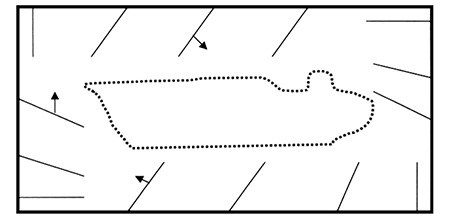
The most common setup for shrimp-pond aerators is parallel to pond levees. This placement induces a radial flow around the pond. The physical aspects of this radial flow were thoroughly analyzed and reported by Peterson (October 2000, Global Aquaculture Advocate) in Australia.
When water velocity was measured in a typical commercial pond in Thailand: a 1.2-ha, plastic-lined pond equipped with 14, 2-hp, long-arm paddlewheel aerators, about 25 percent of the pond was almost stagnant (Fig. 1a). Limited water flow rate was associated with sludge accumulation (Fig. 1b). Sludge of different depths covered about 40 percent of the pond’s area.
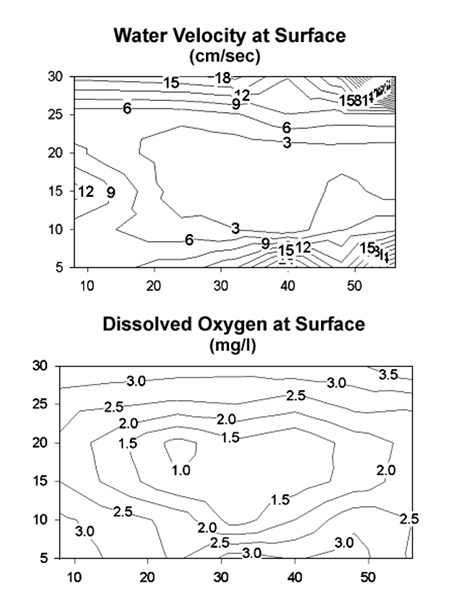
Another study by Delgado et al. (2001) used a relatively small (0.25 ha) pond with a sandy bottom and three paddlewheel aerators (5 hp total power) placed radially. This study showed radial flow of water, and a central stagnant region with a flow rate of less than 2 centimeters per second, which covered about 25 percent of the pond area (Fig. 2). Early-morning oxygen concentrations in this region were very low (0-1 milligrams per liter). Sludge accumulation paralleled the water velocity pattern (Fig. 3).
Sludge deposition was generally less than 1 to 2 kilograms per square meter in the outer shell, and about 4 to 8 kilograms per square meter in the center. Organic carbon accumulation in the pond bottom was less than 100 grams of carbon per square meter in the outer region, and 300 to 600 grams of carbon per square meter in the central region.
Shrimp capture rates were four to five times higher in the periphery region than in the center during daylight, and two to three times higher at night. On two occasions, traps retrieved from the center region contained dead shrimp. It appears shrimp go to sludge-covered areas to feed, but if trapped there may not survive.
Reducing stagnation
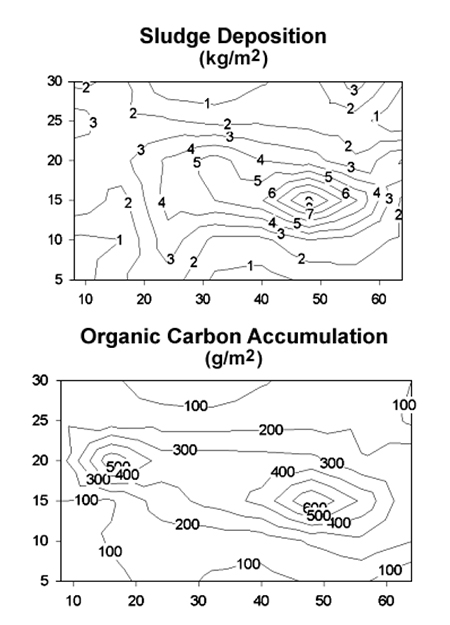
The conventional use of radially placed paddlewheel aerators is not an optimal solution for the control of sludge accumulation in commercial shrimp ponds. One example of a more efficient solution was demonstrated in a commercial pond in Thailand (Fig. 1c).
The long-arm paddlewheel aerators – traditionally placed perpendicular to the pond levees – were turned about 30 degrees toward the center of the pond. A different water flow pattern resulted, and the stagnant fraction of the pond was reduced from 25 percent to 18 percent. It should be stressed that, due to centrifugal forces, even a limited radial flow pattern leads to a significant flow along the pond sides.
Another interesting solution was implemented at Belize Aquaculture’s ponds (McIntosh 2000). The paddlewheel aerators that were initially placed close to the pond levees – creating a narrow ring of flowing water and a large stagnant central region – were moved toward the center at a distance of 60 percent from the corners to the center. This change led to a wider ring of vigorous water movement, better coverage of the pond area, and a smaller sludge accumulation zone.
At Belize Aquaculture and other facilities, sludge removal pits also help get the sludge to a limited area of the pond bottom. They make it possible to drain out the sludge and keep pond bottoms cleaner.
Conclusion
Understanding the multiple effects aerators have in ponds helps in pond design and operation. Aerator positioning, number of units, power, and operation details should be determined based on all these effects, not just oxygen supply. Increased knowledge of aerators and the ability to model water flow in ponds can lead to the use of varied equipment, such as the combination of paddlewheel aerators with water mixers/circulators, which are not designed to add oxygen but to move water efficiently.
Note: Cited references are available from the author.
(Editor’s Note: This article was originally published in the June 2001 print edition of the Global Aquaculture Advocate.)
Now that you've reached the end of the article ...
… please consider supporting GSA’s mission to advance responsible seafood practices through education, advocacy and third-party assurances. The Advocate aims to document the evolution of responsible seafood practices and share the expansive knowledge of our vast network of contributors.
By becoming a Global Seafood Alliance member, you’re ensuring that all of the pre-competitive work we do through member benefits, resources and events can continue. Individual membership costs just $50 a year.
Not a GSA member? Join us.
Authors
-
Yoram Avnimelech
Department of Agricultural Engineering
Technion, Israel Institute of Technology
Haifa, Israel[108,105,46,99,97,46,110,111,105,110,104,99,101,116,46,120,116,64,109,97,114,111,121,103,97]
-
Gad Ritvo
Department of Agricultural Engineering
Technion, Israel Institute of Technology
Haifa, Israel
Tagged With
Related Posts
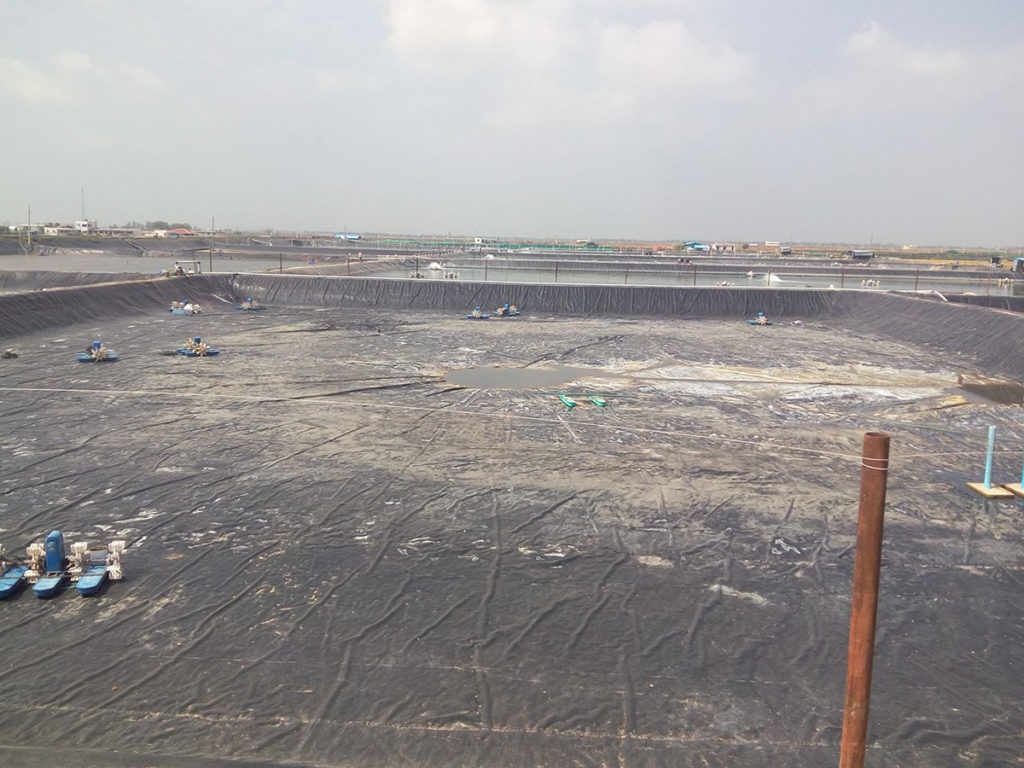
Responsibility
Appraising pond liners for shrimp culture
The use of plastic-lined ponds by shrimp farmers can significantly improve production efficiency, support more production cycles per year, and higher mechanical aeration rates and stocking densities. The capital cost of lining ponds can be very significant, so a thorough feasibility analysis is recommended when considering this production tool.
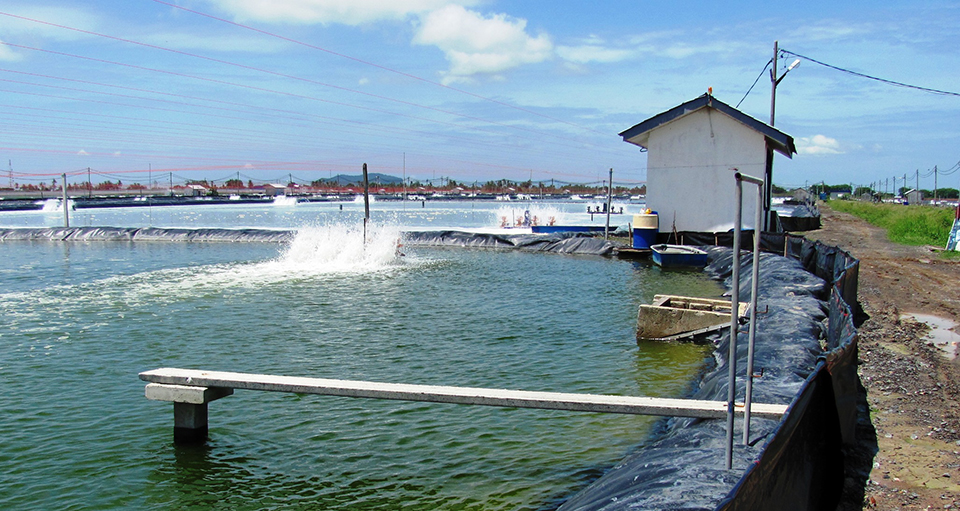
Health & Welfare
Biosecurity for shrimp farms
With the global spread of viruses, biosecurity has become an essential element of every shrimp farm. Biosecurity starts with quality of farm design.
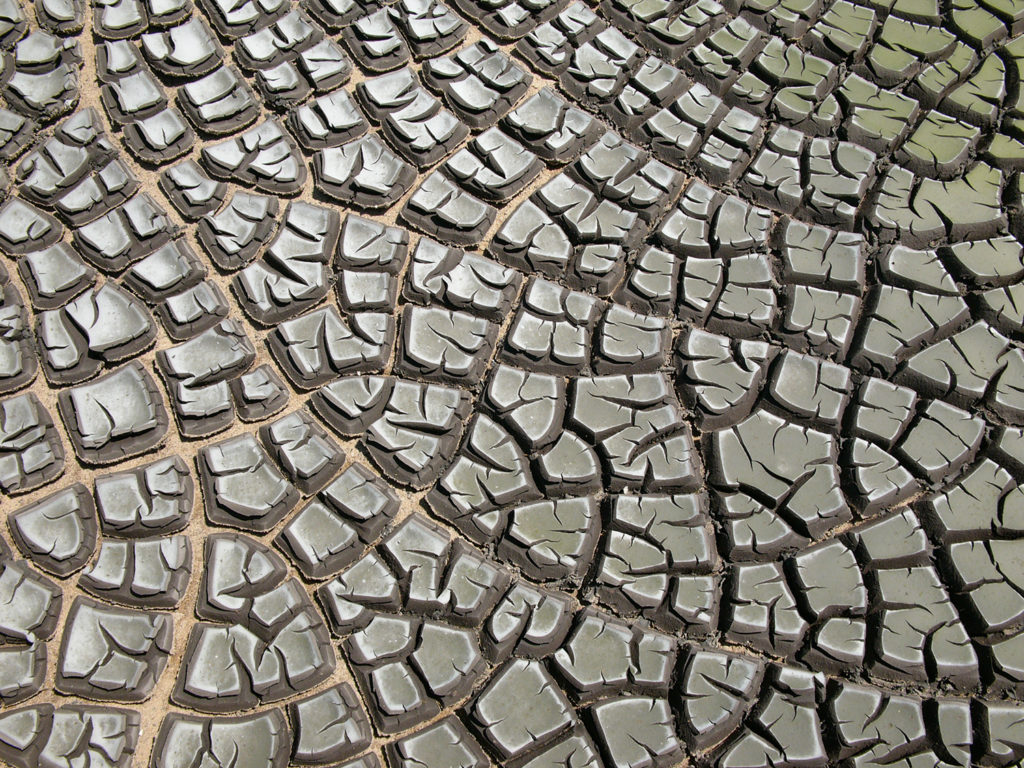
Responsibility
Composting of seafood processing sludge
Study evaluates if controlling maturation stage during seafood sludge composting through turning improves the process in comparison to static composting.
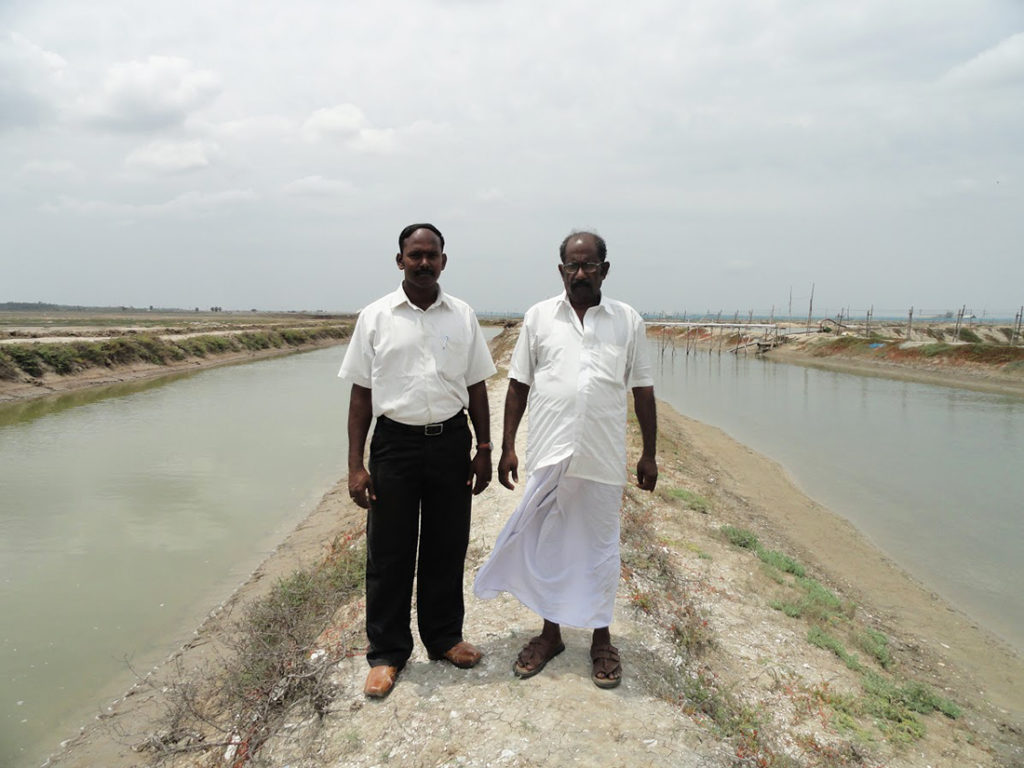
Responsibility
Improving shrimp farm design in flood-prone areas of India
Shrimp farm design improvements like reservoirs and recirculation canals can help small-scale shrimp farmers protect their infrastructure and improve production in flood-prone areas of India and elsewhere.



